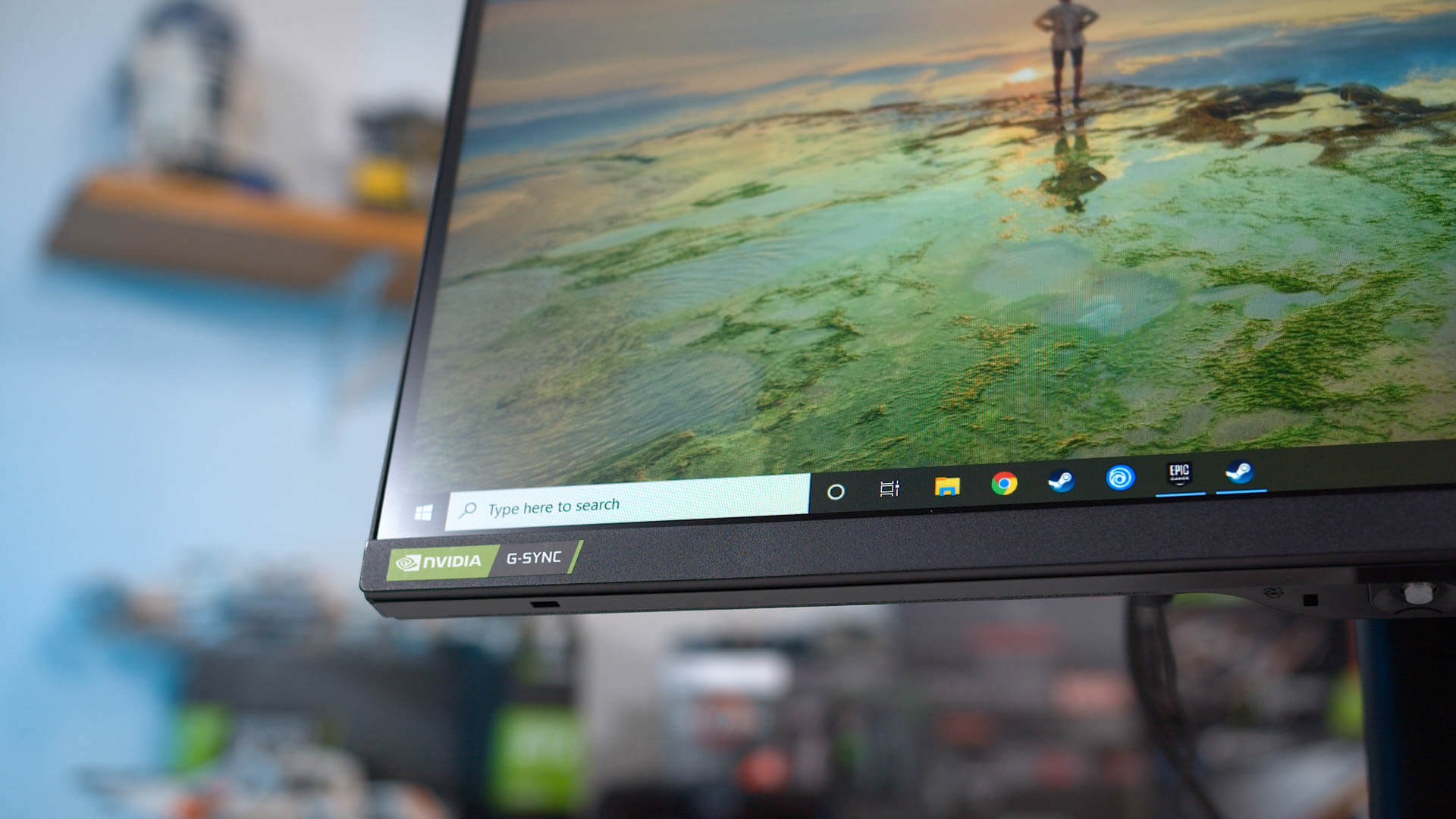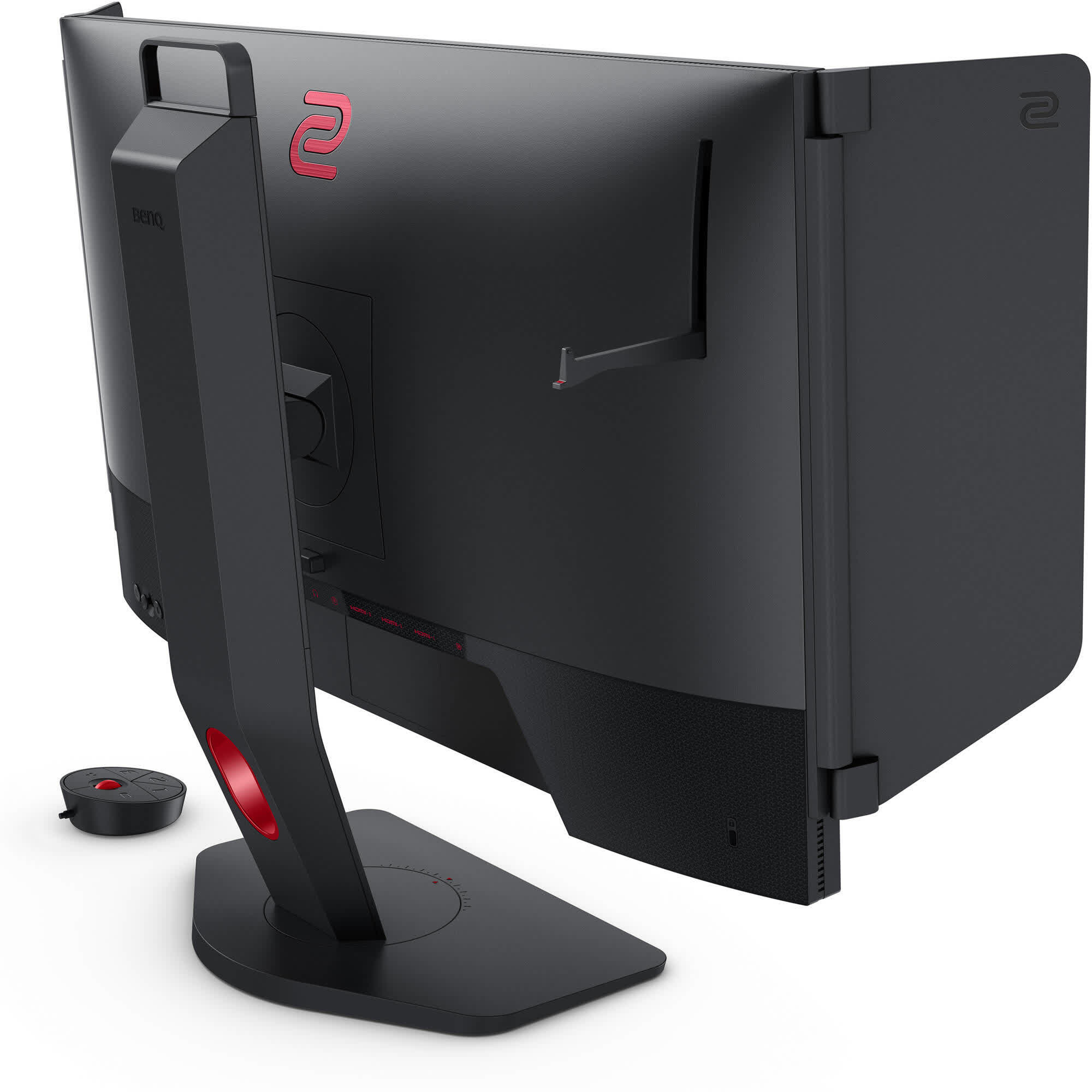[ad_1]
When buying a 240Hz monitor, there are two clear paths you can take: 1) you can go down the full esports route and buy a high quality TN monitor with excellent backlight strobing, or 2) you can grab something more balanced, and that’s where today’s 1080p 240Hz IPS monitors come into play.
We’ve reviewed a handful of 1080p 240Hz IPS offerings, and our pick of the bunch is the MSI Optix MAG251RX, which offers an excellent balance of fast response times and image quality. One of this monitor’s strengths is offering TN-like speed at 240Hz, giving you the true benefit of that refresh rate, along with low input lag. MSI backs this up with great performance across the refresh range, better than Asus’ TUF Gaming competitors which unfortunately deliver varying performance when gaming with adaptive sync enabled.
The MAG251RX is also surprisingly competent at backlight strobing, although not as good as today’s best TN monitors that we’ll talk about soon. However, this does keep the MSI model around the mark for gamers that like a mixture of gaming, both esports and AAA single player. When combined with its strong contrast ratio for an IPS panel, excellent viewing angles, and great factory calibration, MSI are delivering a well balanced experience.
Two Alternatives: LG and Asus
The MAG251RX can be difficult to find in some regions unfortunately. If you can land one, it’s not only the best performing 1080p 240Hz IPS we’ve tested, but also the best value, which may explain the stock issues.
There are backup option however. We’d go for either the LG 27GN750 at 27-inches, or the Asus VG259QM at 24-inches. Our first option would be the LG monitor as it delivers superior response time performance, however it won’t be a great option for those that want backlight strobing, as it doesn’t support it. Other areas are generally equal and both deliver a great color experience. However, those after strobing should consider Asus TUF VG-QM monitors instead.

144Hz vs. 240Hz
It should be noted that 240Hz 1080p monitors are usually a lot more expensive than 144Hz, so the question becomes: is it actually worth spending double the price (or more) to nab something 240Hz?
That depends a lot on your upgrade plans and the games you play. A 1080p 144Hz display is considered an entry-level product, and we’d imagine many would be looking to upgrade eventually to something like a 1440p panel. In contrast, a 1080p 240Hz display will last you longer, especially if high refresh rate gaming is your thing, because there’s a lot more headroom on offer here. So one angle is that while 240 Hz is more expensive, it’s also more future proof.
Generally these high refresh rate displays at this resolution are better suited to competitive gamers, so if you only play these sorts of titles occasionally, then it may not be worth the cost increase. 240Hz does offer a lot to gamers that play Fortnite, Overwatch, Valorant and similar titles, and it should last those gamers a fair while. I’d prefer a 1080p 240Hz display over a 1440p 144Hz monitor in those situations, which are often a similar price.
Esports Gaming Pick
The ultimate monitor for esports gaming at the moment is the BenQ Zowie XL2546K. This is a 1080p 240Hz TN monitor whose main selling point is BenQ’s DyAc+ backlight strobing technology. While we haven’t tested this monitor yet, various other outlets and users have consistently shown outstanding backlight strobing results, leading to a super clear image that benefits esports gamers.
Combined with a high refresh rate and the input latency benefits that brings, the XL2546K is the go-to choice for high-end competitive gaming in a lot of circles.

However, the XL2546K is not for everyone. Certainly not for those after a balanced experience. As like with many TNs, the Zowie sacrifices on color performance to achieve blazing fast response times. Expect poor viewing angles and a mediocre contrast ratio.
It’s also selling for ~$500, which is at least $100 more expensive that the other IPS options we just discussed. In other words, you must be set on using DyAc to get the most out of what is otherwise a pricey option. But if you want the best, then as usual that comes with a price.
If you don’t want a 360Hz display at a high price tag, then 240Hz might be right for you. The MSI Optix MAG251RX is an excellent 1080p 240Hz IPS monitor with a competitive price tag of just $360. This display has very strong performance with up to 3ms response times at 240Hz, better than similar displays we’ve tested, along with great color quality and viewing angles thanks to its use of IPS technology.
Then for budget monitor buyers, the AOC 24G2 and its larger brother (AOC 27G2) remain our top budget choices for under $200 if you can get them at that price. The Asus VG24VQ might be a better option depending on availability.
The AOC 24G2 packs a 24-inch 1080p 144Hz IPS display with solid performance in this price class. No need to worry about slow IPS panels, this screen can push up to the 5ms range on average, which isn’t too far off some of the best 1440p IPS monitors we’ve tested. Of course, just 1080p, and capped to 144Hz, but the motion handling experience is great, and that’s complemented by excellent viewing angles and color performance overall. With this sort of performance on offer in a sub-$200 display, we don’t see a point in buying an even cheaper 1080p display using VA or TN technology.
[ad_2]
Source link